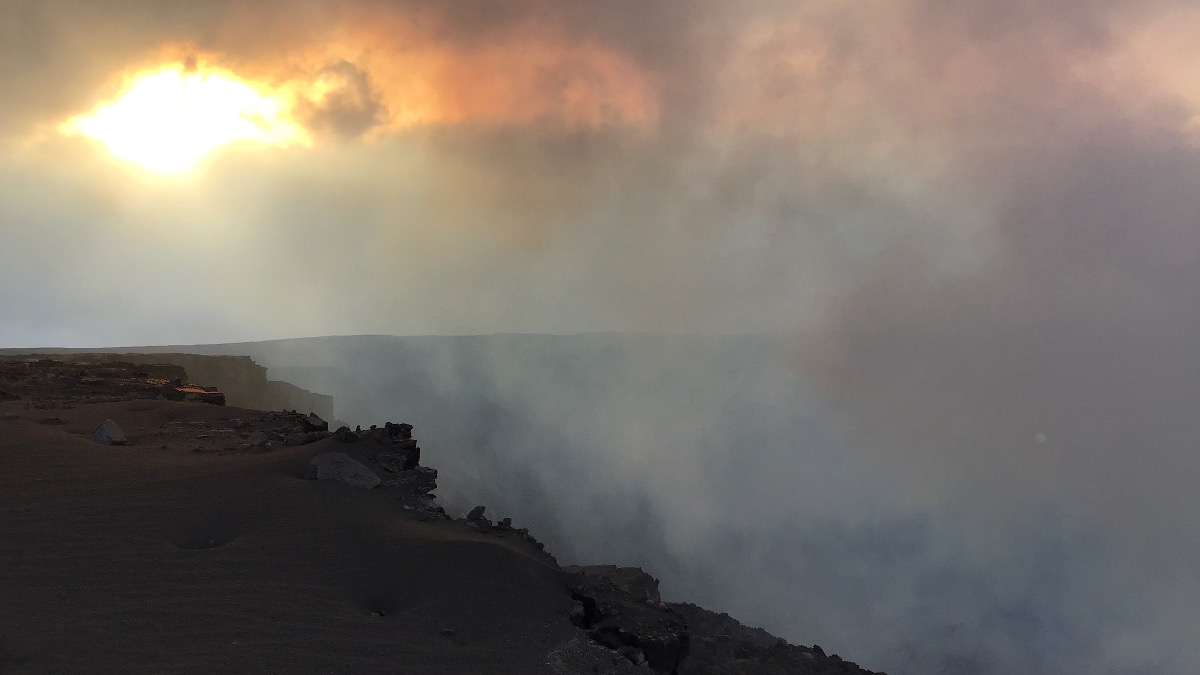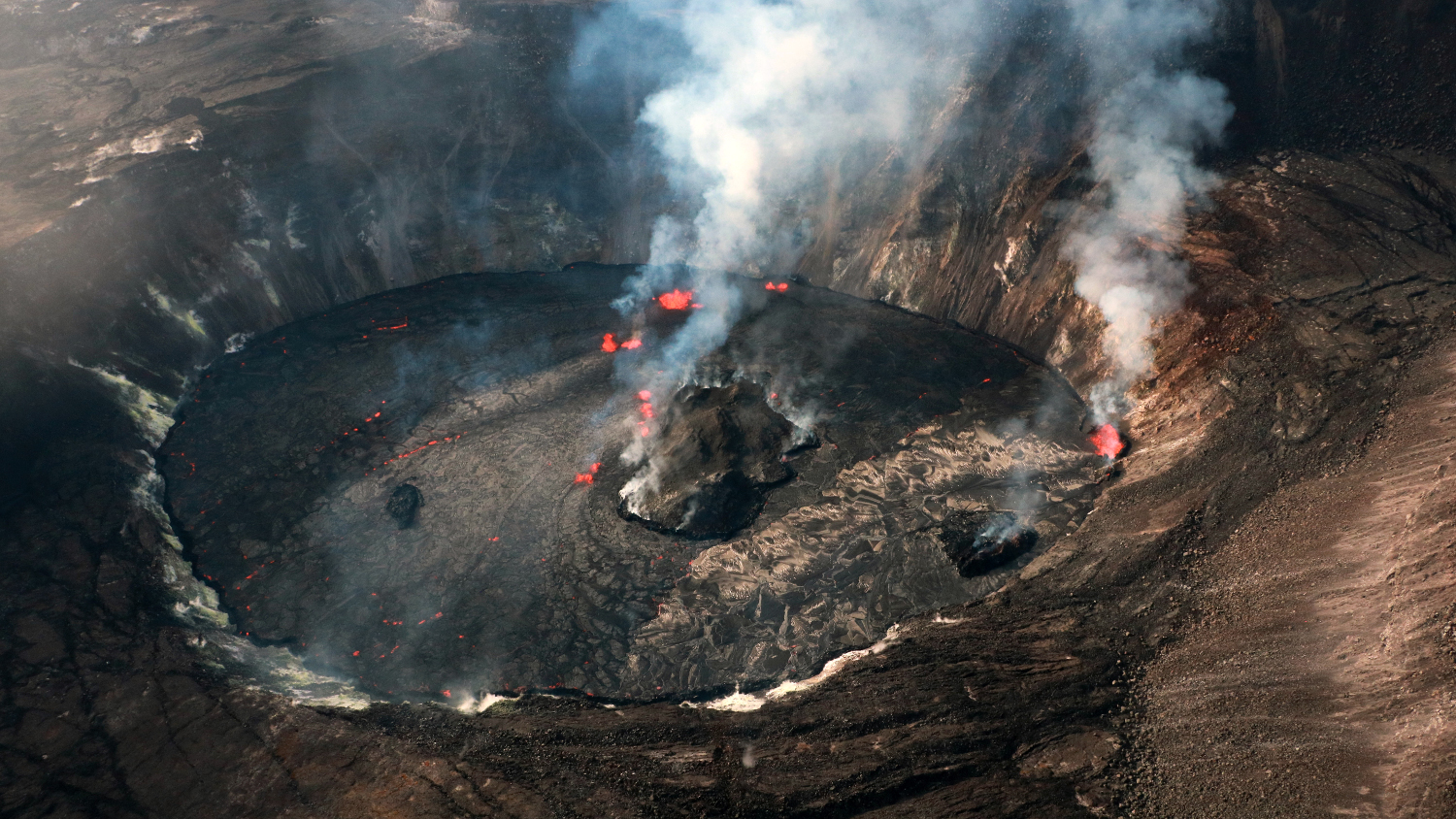
USGS: “The eruption that began (Sept. 29) within Halemaʻumaʻu crater in Kīlauea’s summit caldera, within Hawai‘i Volcanoes National Park, is generating a vigorous plume of volcanic gas. The volcanic gas, which includes sulfur dioxide (SO2), interacts in the atmosphere with oxygen, moisture, dust, and sunlight over minutes to days and forms volcanic air pollution, or VOG, which can be transported downwind.” (USGS photo)
(BIVN) – With a new eruption of Kilauea underway at the summit of the volcano, the Hawaiʻi Department of Health is advising residents and visitors of the potential air quality hazards associated with the new activity.
“As a result of an eruption that began on Sept. 29 from the Halema‘uma‘u crater at the summit of Kīlauea Volcano on Hawai‘i Island, vog conditions and sulfur dioxide (SO₂) air levels are increasing and fluctuating in various areas of the state,” a health department statement reads. “All eruptive activity is within Hawaiʻi Volcanoes National Park however, changing wind conditions have created intermittent air quality problems in areas west of the summit such as Pahala, Nāʻālehu, and Ocean View as well as Hilo and East Hawai‘i. Poor air quality and increased levels of SO₂ may cause problems with respiratory health, especially in sensitive individuals. Conditions are changing rapidly, and poor air quality causing health effects may be very localized.”
The sulfur dioxide emission rates are high, USGS Hawaiian Volcano Observatory scientists say, and were estimated at around 85,000 tonnes per day just after the eruption started, yesterday afternoon at 3:21 p.m. HST.
Health officials say that in the event of vog conditions, the following precautionary measures are advised:
- Reduce outdoor activities that cause heavy breathing. Avoiding outdoor activity and exercise during vog conditions can reduce exposure and minimize health risks. This is especially important for sensitive groups such as children, the elderly, and individuals with pre-existing respiratory conditions including asthma, bronchitis, emphysema, and chronic lung and heart disease.
- Stay indoors and close windows and doors. If an air conditioner is used, set it to recirculate.
- If you need to move out of an impacted area, turn on the car’s air conditioner and set it to recirculate.
- Always keep medications on hand and readily available.
- Daily prescribed medications for respiratory illnesses should be taken on schedule and may provide protection from the effects of sulfur dioxide.
- Remember that face coverings and masks used to prevent the spread of COVID-19 do not provide protection from SO₂ or vog.
- Contact a doctor as soon as possible if any health problems develop.
- Do not smoke and avoid second-hand smoke.
- Drink plenty of fluids to avoid dehydration.
- Have family emergency plans prepared and ready.
- Heed warnings by county and state emergency management officials.
Visitors to the Hawaiʻi Volcanoes National Park should note that rockfalls and explosions can produce ash composed of volcanic glass and rock fragments. These ashfalls currently represent a minor hazard, but dustings of ash at areas around the Kīlauea summit are possible.
The Hawaiʻi Interagency Vog Information Dashboard provides comprehensive and up-to-date online information on vog and SO₂ from volcanic activity.


by Big Island Video News11:45 pm
on at
STORY SUMMARY
HAWAIʻI ISLAND - The latest Kīlauea eruption is creating potential air quality hazards, health officials warn.